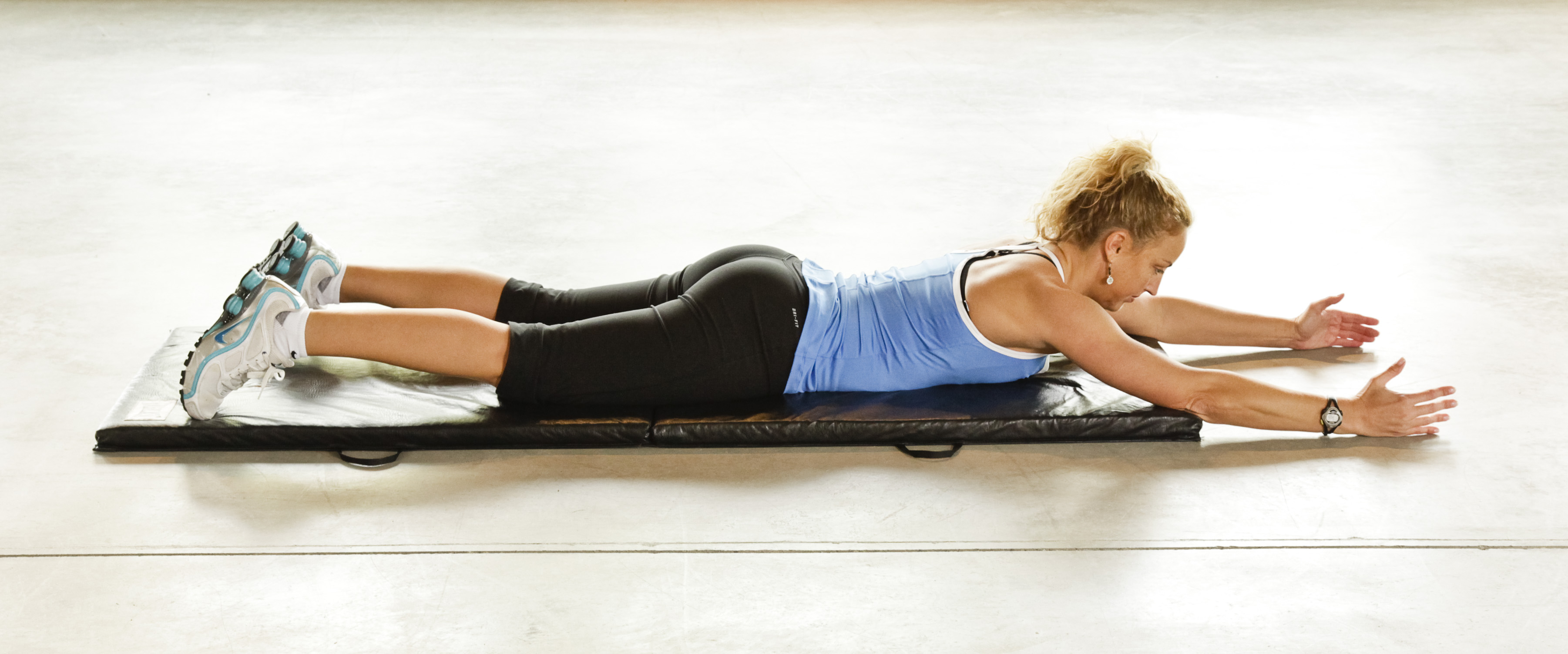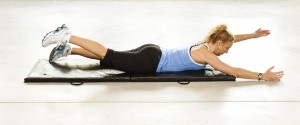Supermans Should Be a Staple Exercise

The prone opposite arm/leg lift, commonly known as the “Superman” exercise, should be an exercise staple for all of us and here’s why:
Strengthens the Core
This exercise targets our glutes, hamstrings and our back muscles along both sides of the spine which are essential for maintaining proper posture and supporting the spine. Strong core muscles help prevent injuries and reduce back pain.
Enhances Spinal Stability
The Superman exercise promotes spinal stability by engaging the erector spinae muscles, which run along the spine. A stable spine is crucial for preventing injuries during other exercises and daily activities.
Promotes Better Posture
Most of us spend a great deal of our days in a forward flexed posture hunched over our cell phones and computers, driving and eating. Everything we do throughout the day is in front of our bodies so whatever we can do to offset those postures will be helpful. Strengthening the muscles along the spine helps correct postural issues caused by prolonged sitting or poor ergonomics. Better posture leads to reduced strain on the body and improved overall health.
How to Perform the Prone Opposite Arm/Leg Lift (Superman) Correctly
Begin by lying face down on a mat.
Your legs should be extended straight behind you, and your arms should be extended straight in front of you, thumbs pointing up to the ceiling. Keep your head in a neutral position by looking down at the mat.
Before lifting, engage your core muscles to stabilize your spine. This helps protect your lower back and enhances the effectiveness of the exercise.
Slowly lift your right arm and left leg off the ground simultaneously.
Keep both limbs straight and avoid bending the elbow or knee.
Raise them only to the height at which you feel comfortable and avoid arching your low back.
Your torso should remain stable with minimal rocking or shifting.
Hold the lift for a few seconds and then slowly return to the starting position.
Continue for 1 minute alternating sides.
Tips for Proper Form
Breathing
Breathe steadily throughout the exercise. Inhale as you lift, and exhale as you lower your arm and leg.
Alignment
Ensure your hips remain parallel to the floor. Avoid tilting or rotating your pelvis.
Range of Motion
Lift your arm and leg only as high as your flexibility and strength allow without compromising your form. Avoid lifting too high and/or excessively arching your low back.
Speed
Perform slow and controlled movements. Performing the lifts too quickly reduces the effectiveness and increases the risk of improper form and injury.
Since this is a low load, postural exercise, it can be done daily as an injury preventative movement to help develop a strong back and great posture. Consider performing a set after a long day at the office or just before bed.
Yours in health & fitness,
Sherri McMillan


